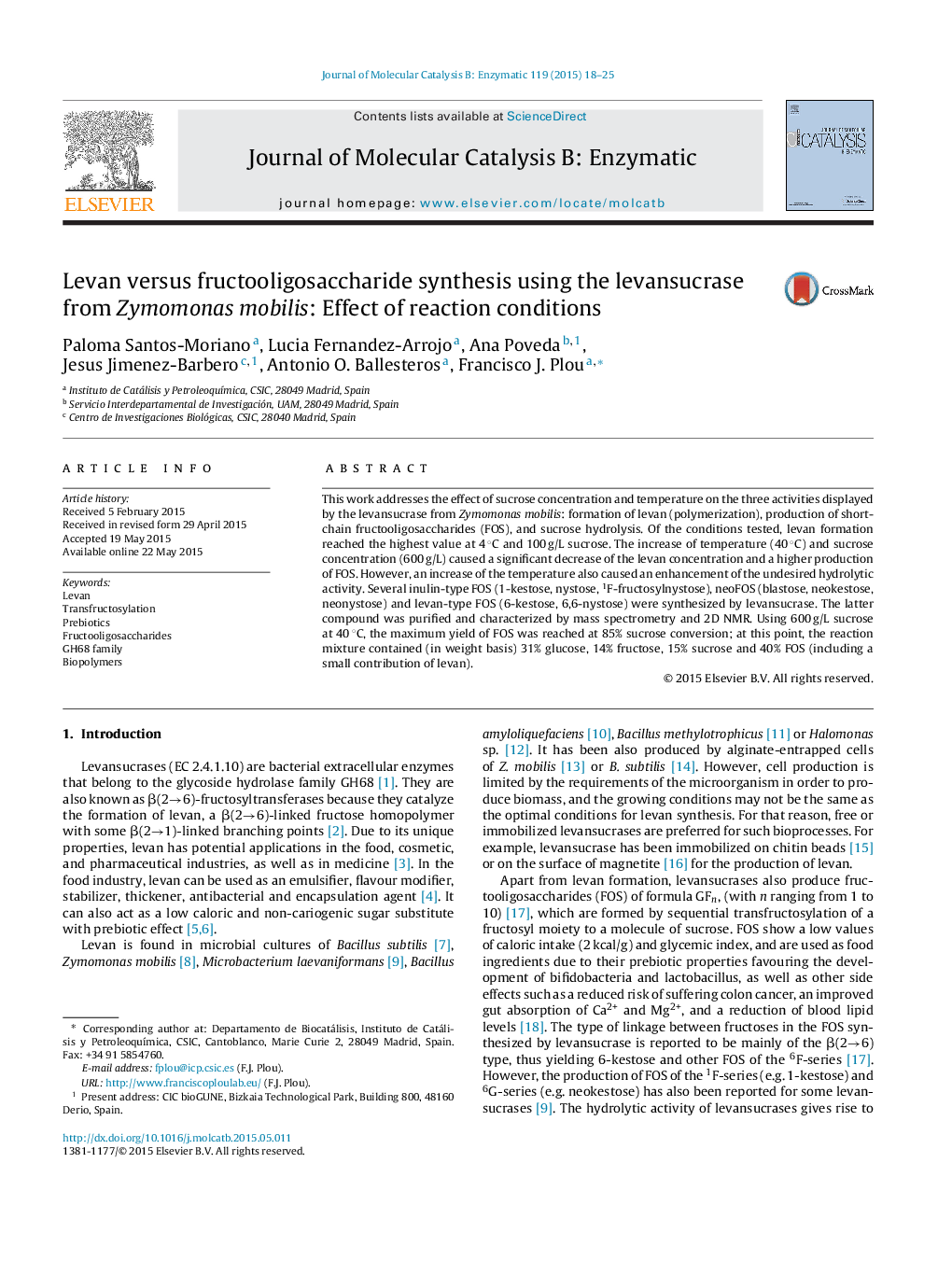| Article ID | Journal | Published Year | Pages | File Type |
|---|---|---|---|---|
| 69646 | Journal of Molecular Catalysis B: Enzymatic | 2015 | 8 Pages |
•Levan formation by levansucrase from Zymomonas mobilis is higher at low temperatures.•High sucrose concentration favours the formation of fructooligosaccharides (FOS) to the detriment of levan.•Levansucrase from Z. mobilis synthesizes a mixture of inulin-type FOS, neoFOS and levan-type FOS.•The tetrasaccharide 6,6-nystose was isolated and chemically characterized.
This work addresses the effect of sucrose concentration and temperature on the three activities displayed by the levansucrase from Zymomonas mobilis: formation of levan (polymerization), production of short-chain fructooligosaccharides (FOS), and sucrose hydrolysis. Of the conditions tested, levan formation reached the highest value at 4 °C and 100 g/L sucrose. The increase of temperature (40 °C) and sucrose concentration (600 g/L) caused a significant decrease of the levan concentration and a higher production of FOS. However, an increase of the temperature also caused an enhancement of the undesired hydrolytic activity. Several inulin-type FOS (1-kestose, nystose, 1F-fructosylnystose), neoFOS (blastose, neokestose, neonystose) and levan-type FOS (6-kestose, 6,6-nystose) were synthesized by levansucrase. The latter compound was purified and characterized by mass spectrometry and 2D NMR. Using 600 g/L sucrose at 40 °C, the maximum yield of FOS was reached at 85% sucrose conversion; at this point, the reaction mixture contained (in weight basis) 31% glucose, 14% fructose, 15% sucrose and 40% FOS (including a small contribution of levan).
Graphical abstractFigure optionsDownload full-size imageDownload as PowerPoint slide
